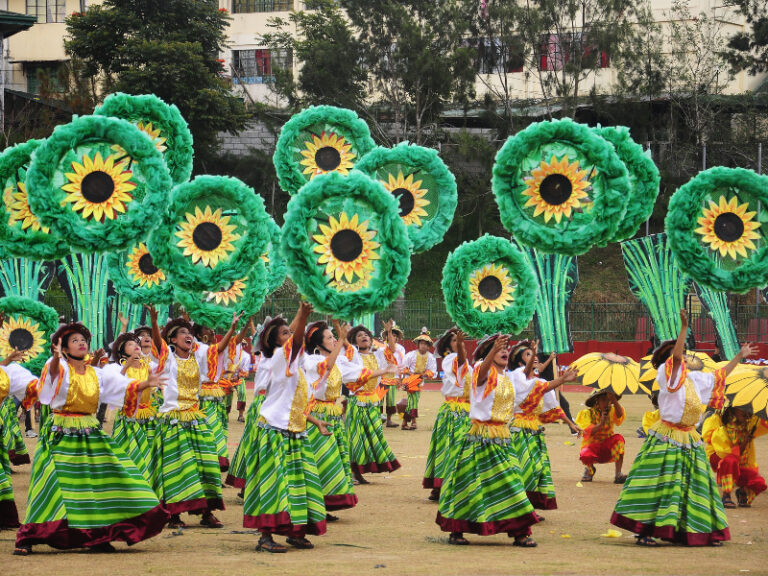Kamalig Festival: Witness Camaligan’s Beauty
The Kamalig Festival is a vibrant celebration held annually in Camaligan, Camarines Sur, located in the Bicol Region of the Philippines. This festival commemorates the town’s founding anniversary and the feast of St. John the Baptist.
As a beautiful embodiment of Filipino culture, the Kamalig Festival transcends mere celebration—it also symbolizes the region’s unity, resilience, and enduring passion for its traditions, offering both locals and visitors a unique insight into the vibrant spirit of the Bicolano community.
So, if you love street performances, delicious food, and colorful costumes, joining this festival will delight your heart. We came up with this guide to help you see what you can expect.
What Is Kamalig Festival?
The Kamalig Festival in Camaligan embodies the true essence of Filipino heritage and unity. This annual fiesta features traditional performances and an array of colorful displays. It’s also profoundly imbued with a significance that touches the heart of Philippine society and history.
From the beats of native drums to the brilliant hues of hand-woven fabrics, the Kamalig Festival is a spirited celebration of the Philippines’ cultural fabric. It showcases the country’s historical threads, reinforces the spirit of Bayanihan, and exudes a sense of shared identity among its people.
The term “kamalig” comes from an ancient Filipino word signifying a traditional granary or a storehouse. It symbolizes agricultural abundance and the collective repository of shared memories and customs passed down from generation to generation.
The festival also showcases the town’s rich cultural heritage, particularly in the traditional design of suanoy na pagbuhay-buhay kan mga taga-Marupit. It features traditional sweets and decorates the kamaligs. Additionally, throughout the nine-day festival, the town’s 14 barangays come together to display their products and celebrate their history through parades, street dances, and pageants.
Kamalig Festival Place of Origin
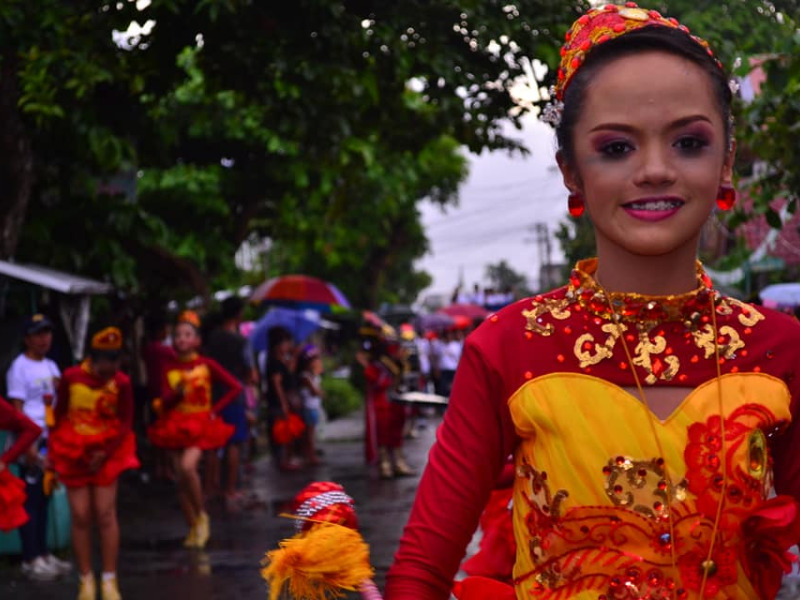
The Kamalig Festival originates from Camaligan, Camarines Sur― a town located in the Bicol Region of the Philippines. The festival is held annually from June 5 to 13 to commemorate the town’s founding anniversary and the feast of St. John the Baptist.
The festival showcases the town’s 14 barangays’ products through kamaligs, traditional sheds or huts used to store harvested crops and shelter for farmers during the rainy season. It also represents the suanoy na pagbuhay-buhay kan mga taga-Marupit, a traditional design that features traditional sweets and kamalig decorations.
Kamalig Festival Costume
The Kamalig Festival in Camaligan features various events, including colorful parades, street dances, concerts, and pageants highlighting the town’s traditional kamaligs and costumes.
During the festival, people wear traditional clothing. The festival’s costumes are a testament to the town’s rich history and culture.
The Marupit costume refers to the traditional outfit worn by women during the festival. It features colorful woven abaca fibers, intricate embroidery, and beadwork. The Marupit costume also includes a two-piece ensemble with a blouse and a skirt.
The blouse has long sleeves and a high neckline adorned with intricate embroidery and beadwork. Additionally, the skirt goes to the ankle and features a colorful embroidered and beaded pattern. To complete the Marupit costume, women often wear a headpiece made from dried banana leaves and feathers.
On the other hand, men wear barong Tagalog and headpieces made from dried banana leaves and feathers. The barong tagalog refers to a traditional Filipino shirt made from lightweight fabrics such as piña, jusi, or silk.
Men wear it untucked over an undershirt and pair it with trousers. The barong Tagalog also features a distinctive design with intricate embroidery. People also often wear it during formal occasions. The headpiece men wear during the Kamalig Festival comes from dried banana leaves and feathers, symbolizing masculinity and strength.
The intricate designs and patterns of the Kamalig Festival’s traditional costumes testify to the town’s rich culture and heritage. Each costume is carefully crafted by hand and takes weeks or even months to complete. The festival’s costumes are not just clothing― they also represent the town’s identity and history.
Delicacies to Try During the Kamalig Festival in Camaligan, Camarines Sur
Here are some of the delicacies you can enjoy in Camarines Sur:
1. Bicol Express
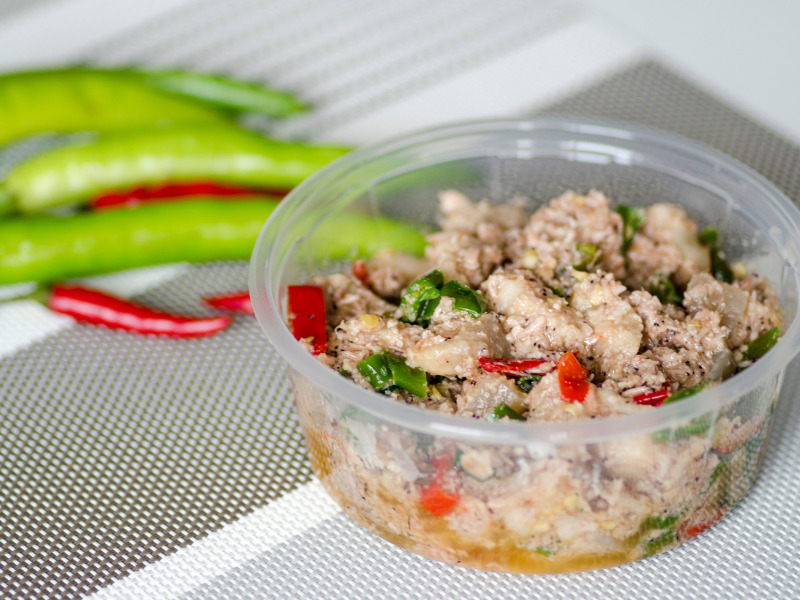
Named after the express train service from Manila to Bicol, this dish originally became popular in Malate, Manila. Its fiery heat comes from green chilies. On the other hand, its creamy texture comes from coconut milk, a staple ingredient in Bicolano cuisine.
Often, locals add bagoong (fermented fish or shrimp paste) for an umami flavor. Variations of this dish have also evolved to include vegetarian versions using unripe jackfruit or even seafood.
2. Laing
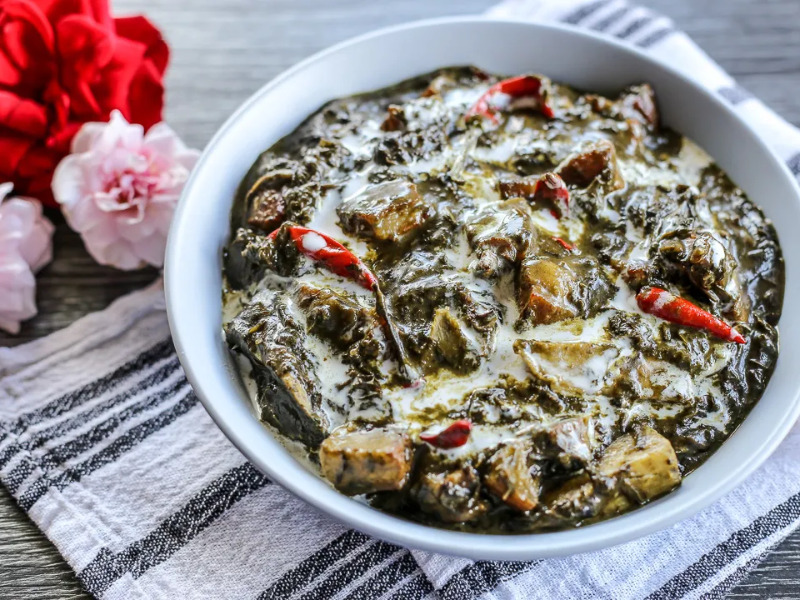
This classic Bicolano dish artfully uses readily available regional ingredients such as dried taro leaves, coconut milk, and chili peppers.
The drying process of the taro leaves not only facilitates storage but also enhances the flavor. These leaves must be cooked properly to get rid of their natural itchiness.
Different versions of laing may include ginger for a spicy zing and lemongrass for a citrusy aroma. Certain renditions also incorporate bagoong (shrimp paste) or bits of pork or shrimp for more flavor. Slow-cooked in rich coconut milk, Laing achieves a creamy consistency and harmonious blend of flavors. Its fiery heat and hearty texture make it a satisfying main dish, often served with warm rice.
3. Pinangat
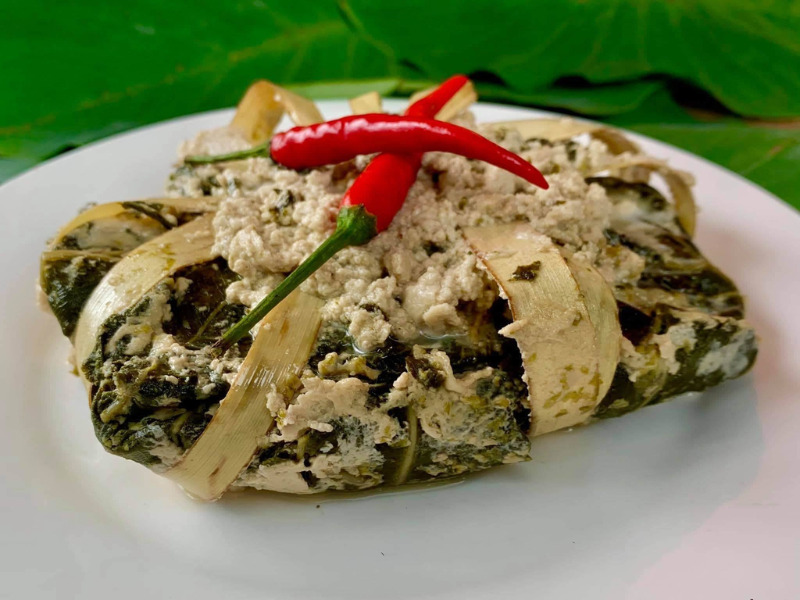
Sometimes confused with laing due to their similar core ingredients, pinangat stands because of its unique preparation.
Cooks wrap meat or fish, chili, shrimp paste, and coconut milk in taro leaves. This contributes to pinangat’s distinct flavor. Locals then slow cook it until the flavors meld together and the taro leaves become tender.
The wrapping technique not only adds a layer of flavor but also creates convenient, single-serving portions, making Pinangat particularly suitable for large gatherings or celebrations. Furthermore, the cooking process of pinangat often involves simmering the bundles in a mixture of water and coconut milk, which produces creamy, savory flavors.
4. Kinalas
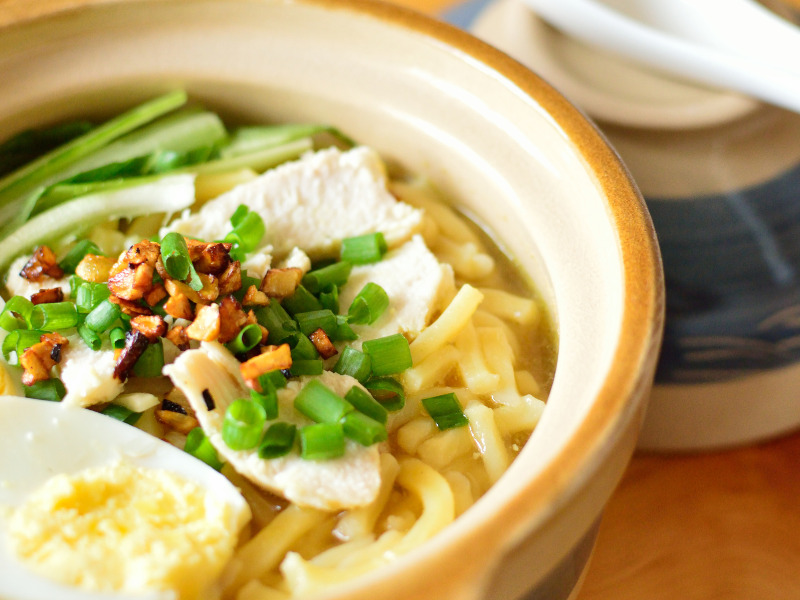
A hallmark of Bicolano cuisine, Kinalas gets its name from the term “kalas,” which translates to “remove.” This process detaches the meat from boiled pork or beef bones to produce a flavorful broth.
The broth or stock, enriched with collagen and savory essence from the bones, forms the base of this traditional noodle dish. Cooks then top the soup with the boiled meat. Next, they garnish it with boiled eggs, chopped green onions, and crispy fried garlic. These create a balance of textures and flavors. While satisfying as a stand-alone meal, you can pair kinalas with puto, a local steamed rice cake, offering a mild and slightly sweet contrast to the soup.
5. Pili Nuts
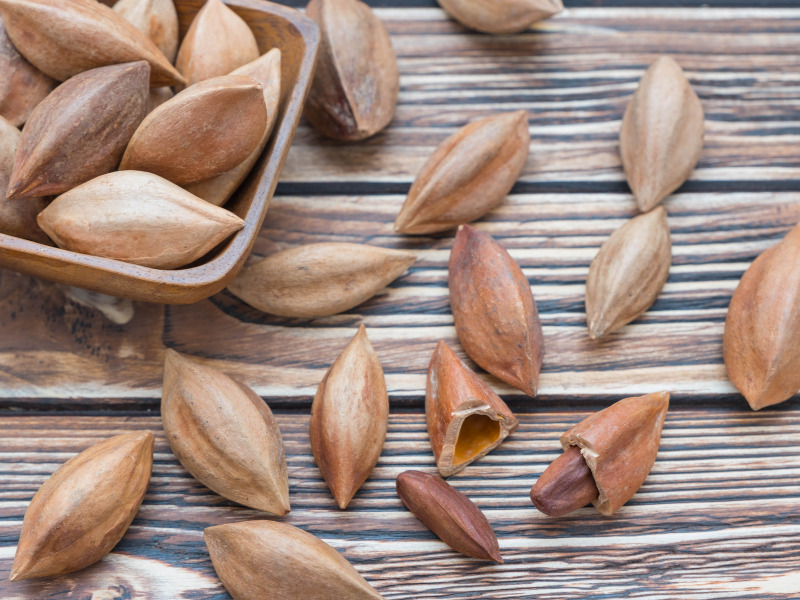
A product of Bicol’s rich volcanic soils, pili nuts have a distinctive buttery flavor. They also have great nutritional content, including protein, calcium, and potassium. You can enjoy them in many forms: raw, roasted, sugar-glazed, or incorporated into pastries like mazapan de pili. In addition, their unique taste and nutritional value have made them a culinary emblem of Bicol, appreciated both locally and globally.
6. Sili Ice Cream
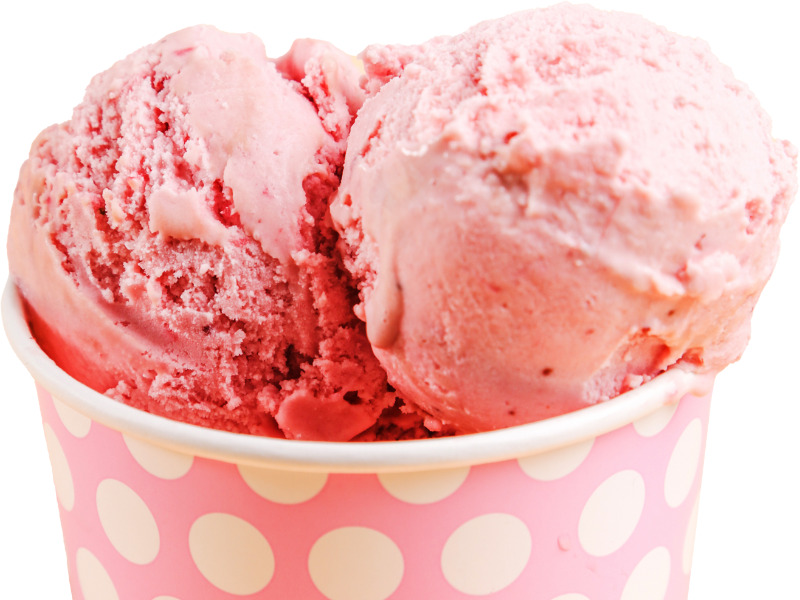
Bicolanos’ love for chili is so big that they’ve incorporated it into a dessert. This creation of the 1st Colonial Grill in Albay has become a popular treat. It features a playful mix of heat from the chili, the sweetness from the sugar, and the cooling effect of ice cream, making it a truly unique dessert experience.
7. Sinantol
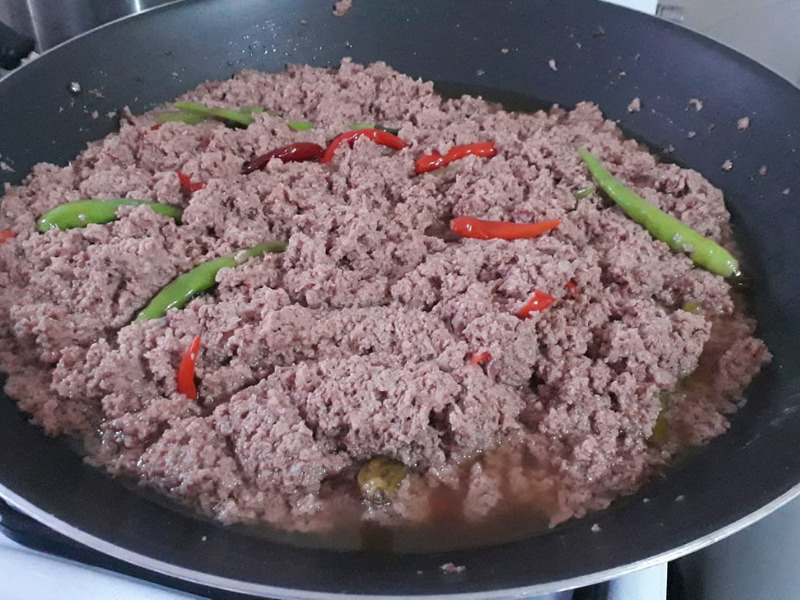
A seasonal dish central to Bicolano cuisine, sinantol takes advantage of the peak harvest season of santol.
Santol refers to a tropical fruit celebrated for its unique sour-sweet flavor. The grated santol pulp forms the base of the dish. Locals then cook it with coconut milk, shrimp paste, and chili peppers. This combination creates a refreshing yet hearty balance of tartness, creaminess, savory umami, and spice.
They then add minced pork or shrimp for extra depth and texture. Traditionally served as a side dish or over rice as a main, sinantol showcases the resourceful use of local, seasonal ingredients. It also offers a vibrant and sophisticated flavor experience.
8. Tinutungan na Manok
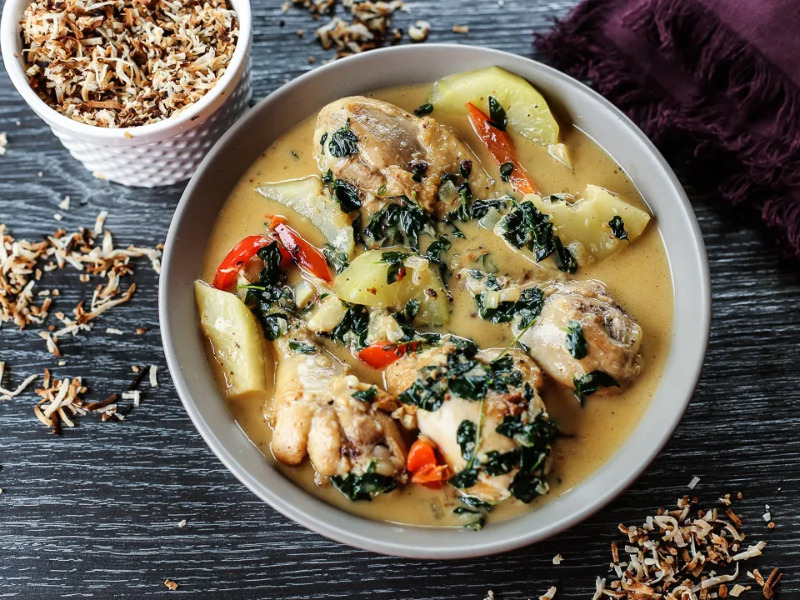
A unique dish from Bicol, Tinutungan na Manok derives its name from “tutong.” It translates to “charred,” referring to the roasted coconut used in the dish.
Cooks toast the coconut before they extract the milk. This provides a distinctive smoky flavor. Next, they marinate the chicken. After that, they brown it and then simmer it in the toasted coconut milk.
The dish also often includes aromatics like garlic, onions, and ginger. It might include nutritious leafy greens like moringa leaves as well. Typically served with warm rice, this comforting meal represents the inventive use of local resources and the rich culinary tradition of Bicol.
9. Bicolandia Longganisa
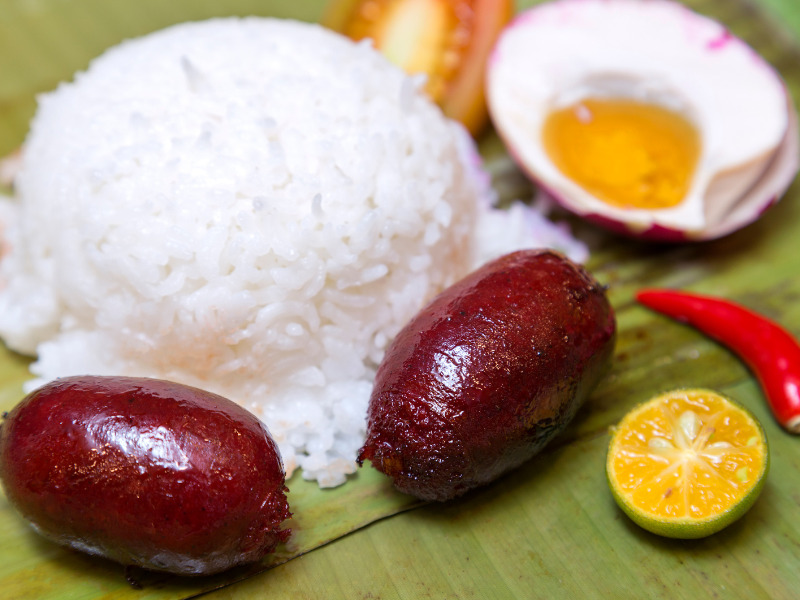
This is a Filipino sausage known for its distinctive mix of local spices and a generous amount of chili. It includes ground pork, garlic, vinegar, and various spices. Locals usually fry it and serve it with rice, often paired with a vinegar dipping sauce to balance out the richness.
10. Pancit Bato
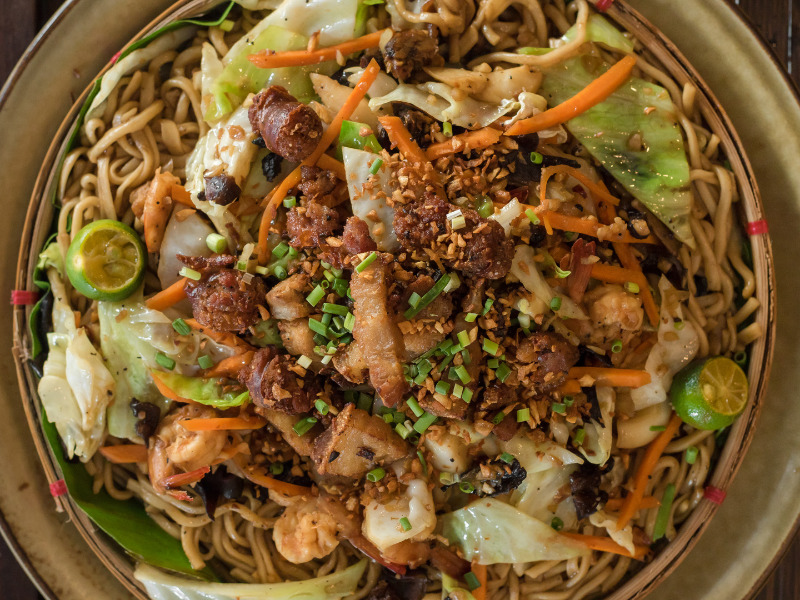
Named after the town Bato in Camarines Sur, this noodle dish uses sun-dried noodles, giving them a unique texture and flavor. Cooks stir-fry the noodles with ingredients like meat, seafood, and vegetables. This dish has many versions, one of which includes pancit bato sa gata, where locals add coconut milk for a creamy, flavorful twist.
11. Inulukan
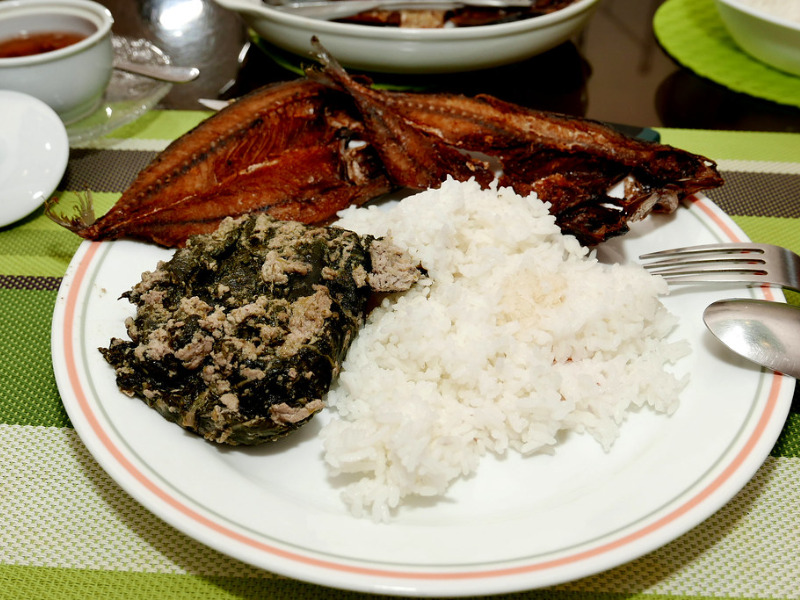
This dish marries regional ingredients like taro leaves, coconut milk, and crab meat. Its name, which means to wrap or fold, describes the preparation process where cooks encase the mixture in a taro leaf. The taro leaves and crab meat have delicate natures, so inulukan has to be carefully prepared.
12. Guinobatan Longganisa
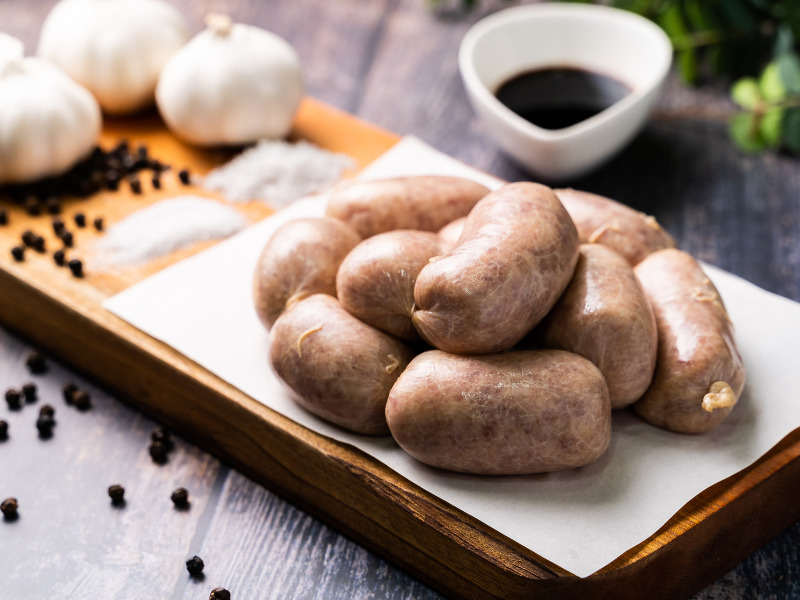
From the town of Guinobatan in Albay, this longganisa variant is known for its sweet, garlicky, and slightly spicy profile. Sweetened with sugar or pineapple juice, it also offers a unique twist on the traditional Filipino sausage. Made from ground pork, makes cured for a few days to enhance the flavors before frying it. Locals usually serve it with garlic rice and vinegar dipping sauce.
Frequently Asked Questions
The Kaogma Festival is the most famous festival in Camarines Sur. The term “Kaogma” comes from a Bicolano word that means “a good time” or “merrymaking.” It celebrates the foundation anniversary of the province.
Festivals in Camarines Sur include the Kaogma Festival, Peñafrancia Festival, Bantayog Festival, Kamalig Festival, Voyadores Festival, Tinagba Festival, Cimarrones Festival, and Pulang Angui Festival.
Camaligan is known for its rich cultural heritage, fishing industry, and bamboo and rattan handicrafts. The town features attractions like the Camaligan River Park, Bicol Regional Museum, and Camaligan Floating Restaurant on the Bicol River. Camaligan also hosts the Pantat Festival, an annual celebration showcasing the local abundance of catfish, accompanied by street dancing, cooking contests, and a fishing competition.
Conclusion
The Kamalig Festival in Camaligan, Camarines Sur, stands as a vibrant testament to the region’s rich cultural heritage and resilient community spirit. As a remarkable platform for traditional Filipino activities, arts, and cuisine, this festival accentuates the historical importance of the kamalig—a traditional Filipino structure.
It also vividly showcases the creativity and ingenuity of the region. The gastronomic adventure it presents, like the spicy and creamy Bicol Express, the unique sili ice cream, and many more, reflects the Bicol region’s penchant for coconut milk-based dishes and love for chili.
So, what are you waiting for? Go book those tickets and explore what the Kamalig Festival has to offer ASAP!
About HICAPS
Over the years, HICAPS has helped bakers and businesses make delicious products by offering ingredients like ChiffonAide Cake Oil, Magic Whizk Whipping Cream, Red Velvet Flavor Emulco, and Instabake Brownie Mix.
HICAPS also provides tools and resources to valued partners, such as the free “How to Increase Your Sales Amidst the Pandemic” E-book and free dealer locator that helps look for baking ingredients near me.
Want more free tips and tutorials? Follow us on Facebook at Hicaps Mktg. Corp. and on YouTube at HicapsTV. Want to be one of our valued partners? Fill this form out. Looking forward to talking to you soon!







